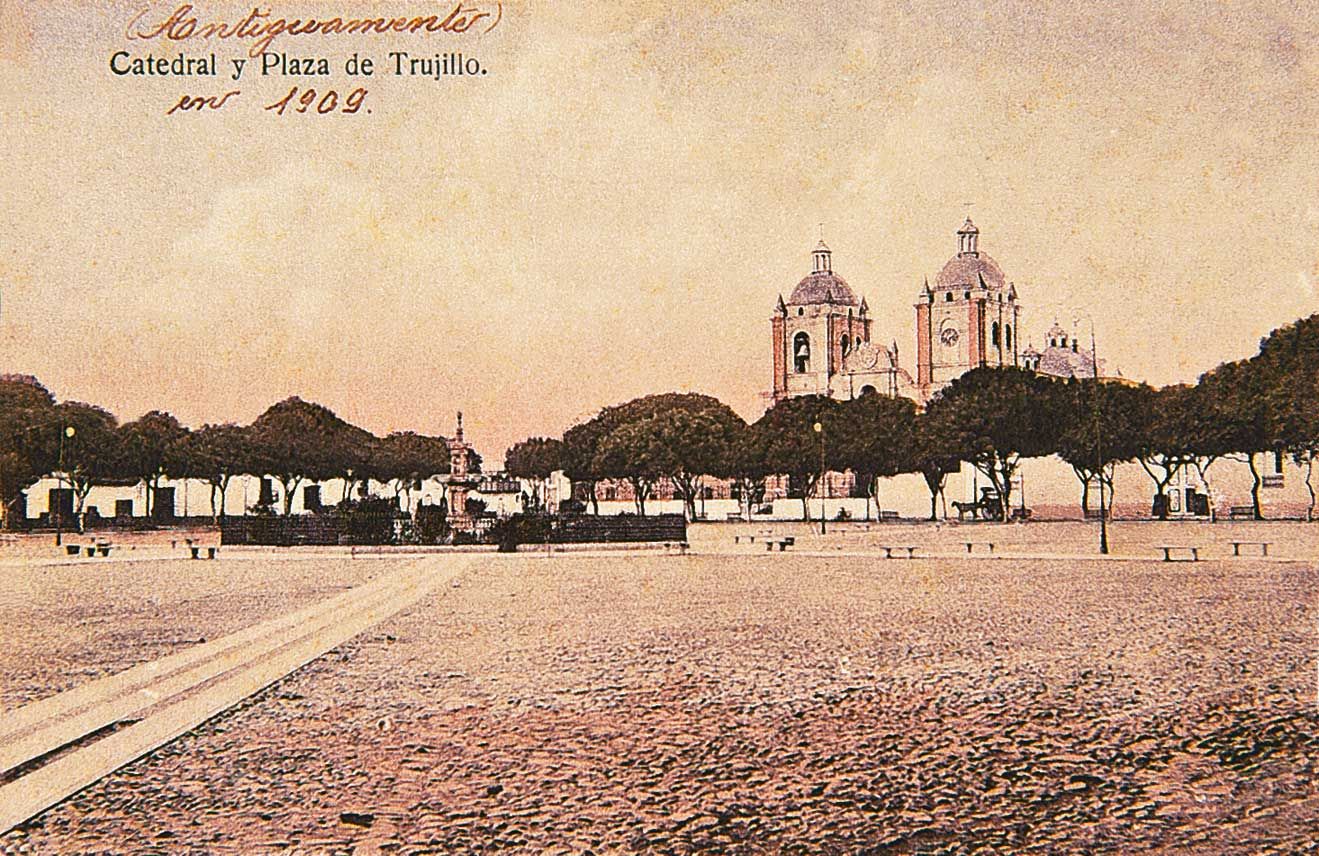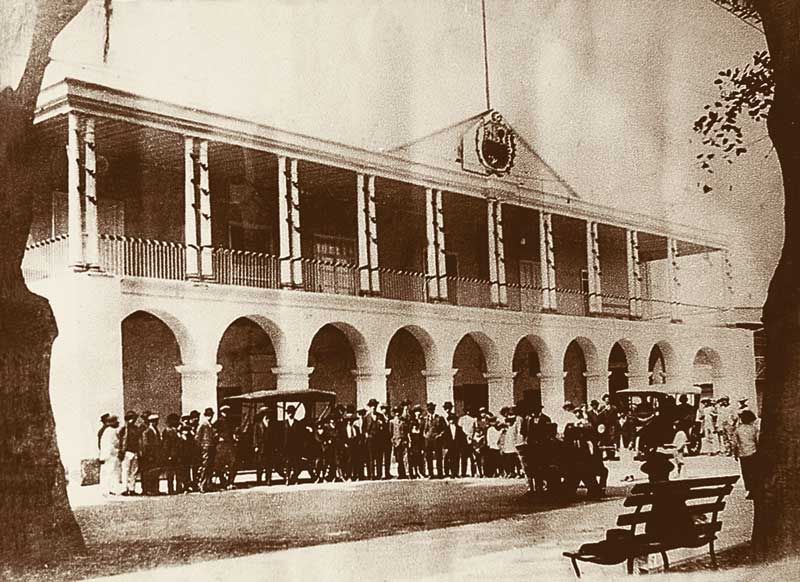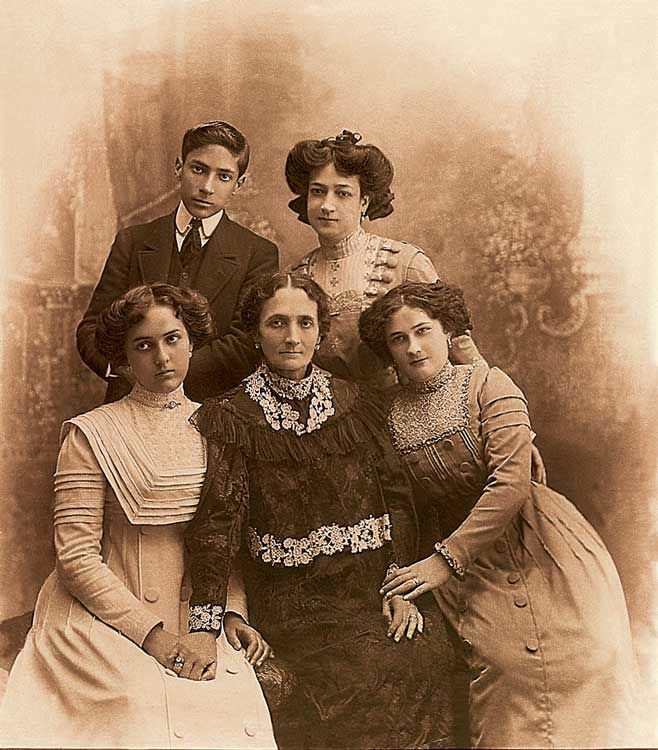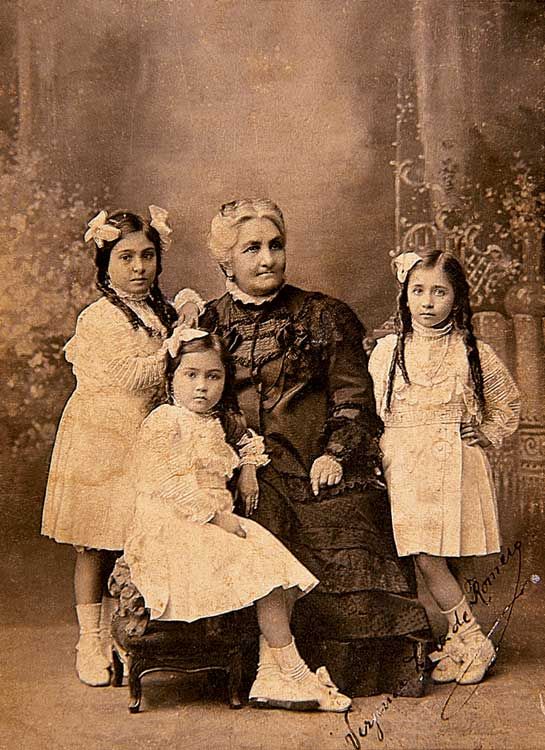The painter´s father was Macedonio de la Torre y González, half brother of Zoila Victoria de la Torre de Cárdenas, mother of Víctor Raúl Haya de la Torre, whose ancestors included notable public figures such as Geronimo de la Torre, regent of the Trujillan chapter when the Marquis Torre Tagle declared independence from Spain on December 29, 1820, seven months before a similar declaration by Jose de San Martín in Lima. On his grandfather’s side, Agustín de la Torre y Urraca belonged to the same branch of the family as Pedro Urraca, a mercenary priest who died in a state of holiness in 1657. The painter´s father was a widower with four daughters: Luz, María Antonieta, Esther and Teresa de la Torre Crespo. Later, he married another widow, Adelaida Collard Mendoza, widow of José Calixto Wenceslao Rosell y Borgoño, with whom he had two children, Pío and Elena. The marriage between Macedonio and Adelaida resulted in three children: the painter Macedonio and his two sisters Mercedes and Rosa. Macedonio had been born into wealthy family and was spoiled by his seven sisters as the only male child, making him worthy of the nickname by which he was so fondly called during his childhood in Trujillo: the boy king. To this we must add the fact that Macedonio had come into the world after his mother had lost another son at birth, reason for which his father felt such great anxiety when Macedonio took a bad fall at the hacienda Chuquisongo. Gathering the boy into his arms, the painter´s father knelt before a cross and desperately cried: “ Lord, please don’t take this one from me!”
Over time, Macedonio proved himself highly deserving of his nickname. His lively imagination and ingeniousness transformed the calm paternal home into a scenario of games and entertainment. He encouraged his cousins and friends to participate in artistic and theater acting that converted the living room of the residence into a theater for hilarious comedies with extravagant and unexpected endings. Macedonio´s cousin Víctor Raul, a then puny youngster, was also a frequent player. Víctor Raul was fascinated by oratory and took every occasion to climb up on a stairway leading to an attic located on the mansion’s back porch in order to practice his first speeches. He gave generous tips to his playmates ...a sort of bribe for those who had the patience to listen.
View of the Plaza Mayor and the Cathedral of Trujillo in 1909.


The Municipality of Trujillo at the beginning of XXth Century
Macedonio de la Torre, Elena Rosell Collard, Mercedes de la Torre Collard, Adelaida Collard Mendoza de De la Torre and Rosa de la Torre Collard.


Adriana´s paternal grandmother, Mrs. Virginia Laínez Lozada, with her granddaugthers Virginia Romero Lozada Bello, Graciela Romero Lozada Bello and Adriana Romero Lozada Bello, Macedonio’s future wife.